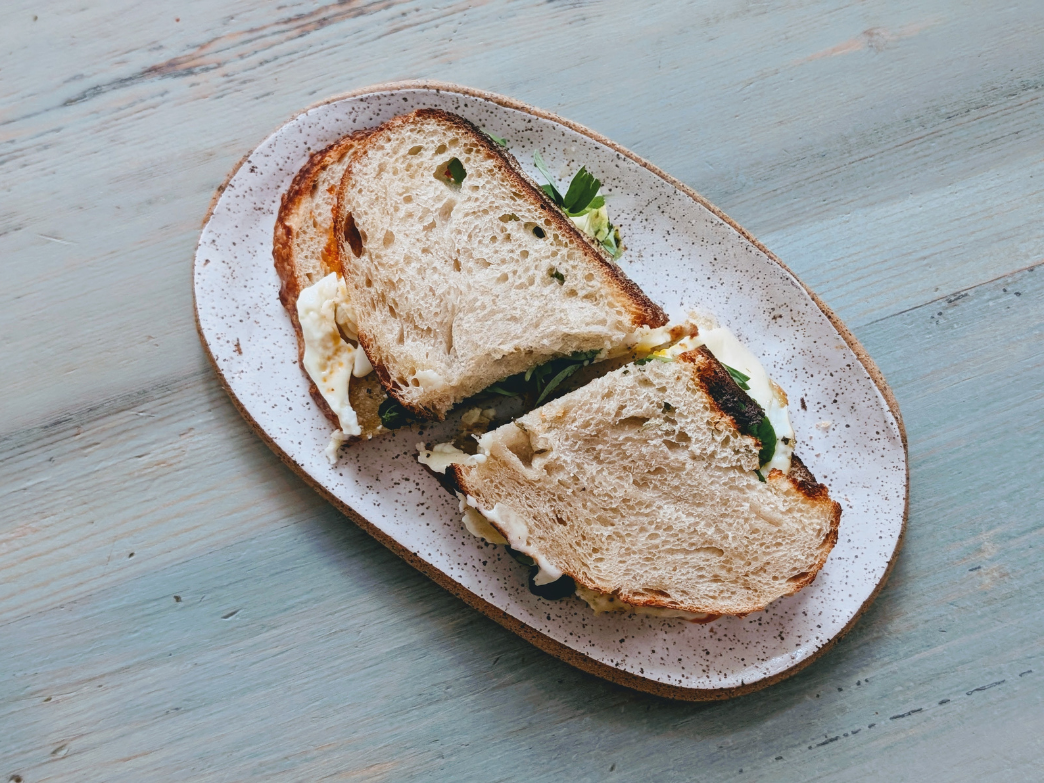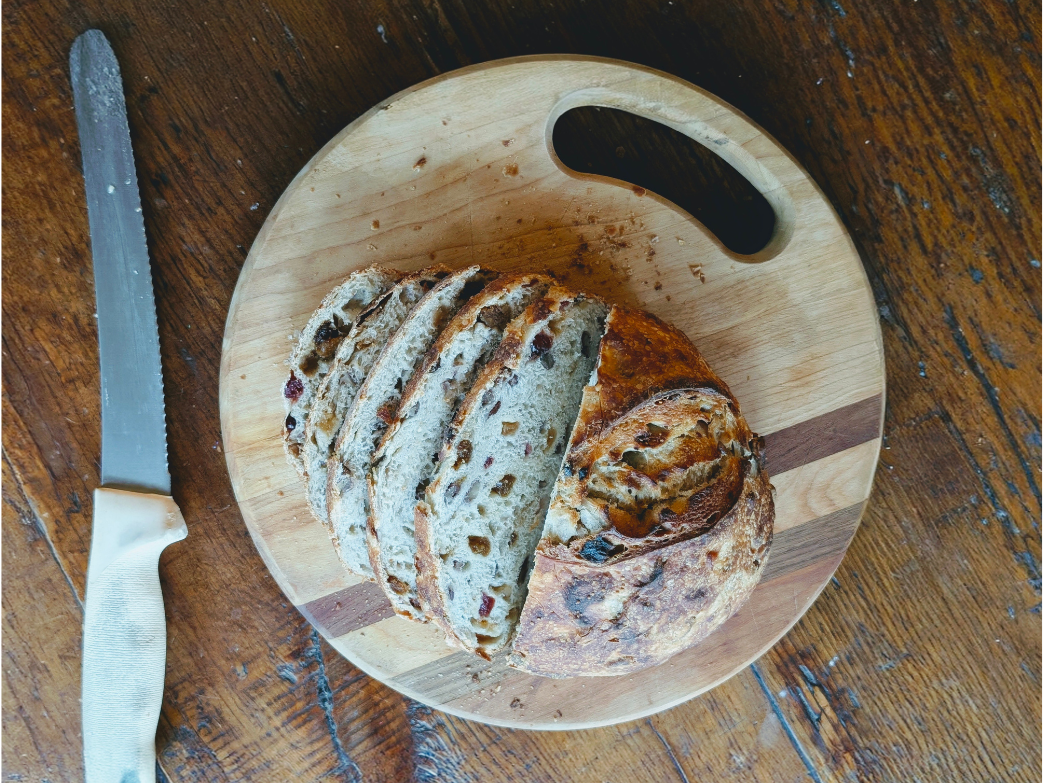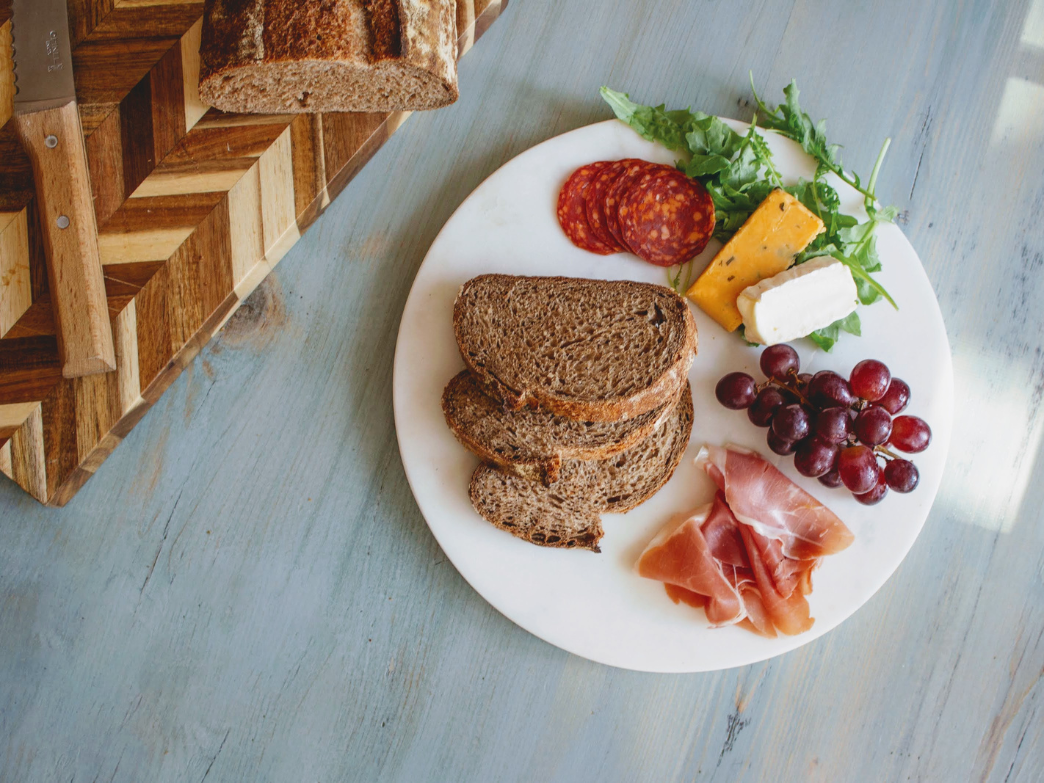Break through your diet plateau and kick your metabolism into overdrive with this four-week meal plan.
Here’s the deal, carbs are good for pretty much one thing — providing energy. And let’s face it, going too long without them can take your workouts from awesome to crummy and leave you feeling like a certified couch potato. On the flip side, cutting carbs, even by just a small amount, can help you get (and keep) the bod you’ve always wanted. The struggle is real: This love/hate relationship with our favorite macronutrient has got to go. The fix? Carb cycling. It may just be the happy medium you’re looking for.

Carb Cycling 101
Carb cycling is a simple dietary approach in which you alternate the amount of carbs you consume on a daily, weekly or even monthly basis. There’s no one right or wrong way of doing it — if you eat fewer carbs today than you do tomorrow, you’re carb cycling. So why do it? There aren’t many scientific studies surrounding the protocol, but we can take some insight from how macronutrients are used in the body and what we want to get out of our training and nutrition habits.
While carbs provide energy — we need them to perform at an optimal level — we don’t need carbs all the time. That’s why it makes sense to use them only when needed the most — during intense physical training. On the days we’re not training to our fullest — maybe it’s an off day or a light training day — cut back on carbs to help improve metabolic flexibility and help the body learn to use fat as fuel. And because the body uses stored glycogen (sugar from carbs) during training, strategic high-carb days can help replenish your supply and increase strength during workouts.
The other cool thing about carb cycling is that targeting your carb intake around training days can help improve insulin sensitivity. If you’re insulin sensitive, the body only needs to release a small amount of insulin to use and store glucose (blood sugar). This factor alone can keep you from putting on too much body fat and prevent you from getting Type 2 diabetes.
To get even better weight-loss results, pair carb cycling with a caloric deficit (reduce calorie intake and/or burn more calories).

Your Four-Week Carb-Cycling Meal Plan
While there are a handful of ways to interpret carb cycling, this plan is based around your training routine. Our plan is laid out for you to use the high-carb and moderate-to-low-fat and protein menus for endurance/cardio or intense training days. On off days and weight-training days, you’ll follow the high-protein, high-fat and low-carb menus. If you’re someone who doesn’t do any cardio or does cardio and weights on the same day, use the high-carb days on weight-training days and follow the low-carb days on off days.
Since we’re changing the amount of carbs we’re eating based on training, we’re going to do the same with protein and fats. You’ll notice that on high-carb days, protein and fat are reduced, while on low-carb days, you’ll be eating more protein and fat throughout the day to maintain satiety and keep calories similar throughout the week.
Though protein has been lowered on high-carb days, it’s still considered “high” in the mainstream nutrition world. This is because no matter what day it is — training, endurance or off day — protein is always important. It helps boost metabolism, burn fat, improve recovery and build/maintain muscle. Plus, it helps keep us full and satisfied long after eating.
How to Tweak the Plan to Your Routine
The meal plan is laid out as follows:
Monday/Wednesday/Friday = Weight-Training Day = Low Carb
Sunday = Off Day = Low Carb
Tuesday/Thursday/Saturday = Endurance/Cardio Day = High Carb
The weekly calendar follows an every-other-day approach to training and cardio days. If your workout schedule follows a two-on and one-off approach, simply use the endurance meal-plan days for on days and the training/off menus for your off/rest days. You can manipulate the meal plan based on your own schedule as needed. So if you workout three days with two days of rest in between, update your meal plan accordingly.
If you’re not seeing the results you’re looking for or have hit a plateau, you can try reducing carb intake to about 30 grams total for the entire day on off days only (aka days of complete rest). Another option is to reduce calorie intake by 100 to 200 on weight-training and off days — this is the equivalent to cutting out one snack — while your high-carb days will remain the same.
Salmon Poke Bowl
Note: Poke bowls are generally made with raw fish or tofu. However, this dish is still fabulous if you choose to cook the salmon or use a smoked variety. To cook the salmon, marinade it in the sauce recipe provided, and either cook on a hot grill or bake in the oven at 400 degrees for 12 to 15 minutes, or until cooked through.
Makes 1 serving
Ingredients:
- 3 oz fresh sashimi-grade salmon
- cubed into ¾- to 1-inch pieces(You can find this at your local
- Whole Foods or other freshmarket.)
- ¼ cup shredded purple cabbage
- ¼ cup sliced cucumber
- ¼ cup sliced carrot
- 1 tbsp chives, chopped
- 1 tbsp toasted sesame seeds
For the sauce:
- 2 tbsp sesame oil
- 1 tbsp low-sodium soy sauce or liquid aminos
- 1 tsp rice vinegar
- ¼ tsp ground ginger
- ¼ tsp toasted sesame seeds
- ½ to 1 tsp Sriracha hot sauce, or to taste (optional)
Directions:
- In medium bowl, whisk together ingredients for sauce. Add salmon and toss well. Set aside.
- To assemble your poke bowl, add rice first. Then top with the rest of the ingredients and seasoned salmon.
- Garnish with fresh chopped chives and toasted sesame seeds. Top off with remaining sauce.
Nutrition Facts (per serving): calories 549, total fat 39 g, saturated fat 6 g, trans fat 0 g, protein 21 g, sodium 369 mg, carbs 32 g, fiber 5 g, sugar 3 g
Pizza Mac n’ Cheese Casserole
Makes 6 servings
Ingredients:
2 cups whole-wheat elbow
noodles or gluten-free elbow
noodles (Banza chickpea pastais awesome!)
½ cup nonfat milk
¼ tsp salt
¼ tsp onion powder
¼ tsp garlic powder
½ tsp dried oregano
¼ cup nonfat milk
1 tbsp cornstarch
2 tbsp grated Parmesan cheese
1 cup + ¼ cup part-skim shredded mozzarella cheese
1 tbsp butter
12 turkey pepperonis
½ cup tomato sauce
Directions :
- Cook noodles as directed on package until al dente. Drain and set aside.
- In small saucepan, add ½ cup nonfat milk, ¼ teaspoon salt, ¼ teaspoon oregano, ¼ teaspoon garlic powder and ¼ teaspoon onion powder, and bring to a simmer.
- In separate small bowl, mix cornstarch with ¼ cup nonfat milk and add to saucepan. Mix well and continue to stir over heat for a few minutes until sauce starts to slightly thicken, about three to four minutes.
- Shut off heat and mix in 1 cup mozzarella cheese. Stir until melted throughout. Mix in 1 tablespoon butter.
- Combine cooked noodles with cheese sauce until well-combined. Add cheesy noodle mixture to casserole dish. Pour tomato sauce over the top. Sprinkle with remaining mozzarella cheese and top with turkey pepperonis.
- Bake in oven at 375 degrees for 20 to 25 minutes, or until the top is slightly brown and gooey.
Nutrition Facts (per serving): calories 358, total fat 7 g, saturated fat 3 g, trans fat 0 g, protein 21 g, sodium 379 mg, carbs 58 g, fiber 8 g, sugar 1 g
Pesto Chicken Sandwich
Makes 1 serving
Ingredients:
- 2 slices light whole-wheat bread
- 3 oz grilled chicken breast
- 1 tbsp pesto sauce
- 1 slice mozzarella cheese
- 2 slices fresh tomato
- 1-2 tbsp olive oil mayonnaise
Directions:
- Heat skillet over medium heat or preheat a countertop panini press or indoor grill.
- Slather olive oil mayo on one side of each slice of bread. Then spread pesto onto the opposite side of each slice of bread.
- Assemble sandwich starting with chicken, then tomato and finish with slice of mozzarella cheese. Top sandwich with second piece of bread and place onto heated skillet or grill.
- Cook about two minutes per side (on the skillet), or until bread is toasted and cheese is melted (when using the grill).
Nutrition Facts (per serving): calories 419, total fat 24 g, saturated fat 5 g, trans fat 0 g, protein 30 g, sodium 575 mg, carbs 24 g, fiber 5 g, sugar 5 g
French Toast With Caramelized Bananas
Makes 1 serving
Ingredients:
- 1 large egg
- 1 large egg white
- dash ground cinnamon
- dash ground nutmeg
- 1 tsp vanilla extract
- 2 slices light whole-wheat bread
- 2 tsp butter
- ½ medium banana, sliced into ¼-inch rounds
- ½ tsp cinnamon
- 1 tsp maple syrup
- ¼ tsp vanilla extract
Directions:
- In small bowl, whip egg, egg white, cinnamon, nutmeg and vanilla.
- Dunk and coat bread slices in egg mixture, and cook on grill or skillet until they are golden brown, about one minute per side.
- Add butter to skillet and place over medium heat. Once butter has melted, add sliced banana, cinnamon, vanilla extract and maple syrup. Stir to combine and saute until they are just cooked and soft, about three minutes.
- Pour cooked bananas on top of French toast. Top with a dollop of whipped cream and dash of cinnamon.
Nutrition Facts (per serving): calories 324, total fat 13 g, saturated fat 6 g, trans fat 0 g, protein 16 g, sodium 369 mg, carbs 40 g, fiber 6 g, sugar 15 g

View the 2 images of this gallery on the original article
Written by Shoshanna Pritzger for Oxygen Magazine and legally licensed through the Matcha publisher network, opens in a new tab. Please direct all licensing questions to legal@getmatcha.com.



